Flamboyant Flowerheads from Cornales entering the field wrangling with the Red Queens of the Ericales. Ladies and Gentlemen, today we have Hydrangea vs Rhododendron. The most stunning ornamental shrubs vs the profound red scenery of woody trees.
As always, before getting into the main business, let’s take a brief look at the history of both beauties.

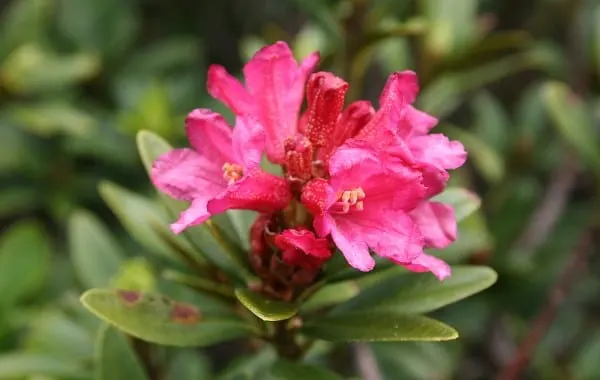
What is Hydrangea?
Hydrangea is a relatively concise plant genus from the family Hydrangeaceae, with almost 75 to 80 species of exotic flourishing plants native to eastern regions of Asia and America.
However, many species are so scarce that a few sources claim the number to be 28 or 49. You can also find some wild species (Hydrangea arborescens L.) in the rocky areas of the mesic forest, US.
Commonly known as “hortensia,” they are pretty diverse in their types. Most of them are colorful blooming shrubs, and some are climbing and vining species or small trees.
The name Hydrangea originates from ancient Greek, meaning “Water-vessel.” This thing also gives us the idea that the plants related to this genus would love to be in a barrel of water!
Just kidding😂. Of course, not in a water barrel, but they love to be in constant moisture.
Hydrangeas are easy to care for, making them an excellent choice for homes and gardens. They are a must for every plant lover due to their unfathomable looks.
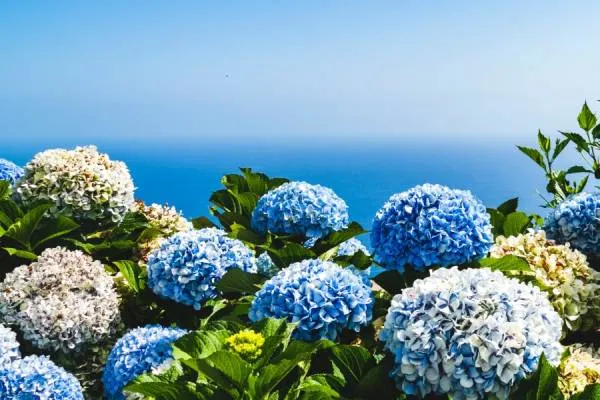
Rhododendrons
The word Rhododendron also has its roots in ancient Greek, meaning “Rose-tree” or “Red-tree.” That’s because most of the species related to this genus produce deep rose and facile red-colored flowers.
Rhododendron is one of the largest plant genera of the family Ericaceae. The number of recorded species related to this genus is more than 1200. They are also famous for their luring foliage and attractive flowers.
These striking rosy, evergreen or deciduous, woods and shrubs are native to Pacific Northwest, Asia, Europe, California, and North America. They are also present in tropical regions of the Himalayas and Southeast Asia, usually in acidic soil. Most of the tropical species are epiphytes.
Rhododendron is regarded as a national flower in Nepal.
This genus also has a variety of plants, including small shrubs to gigantic trees. Species related to this genus are structurally distinctive from one another.
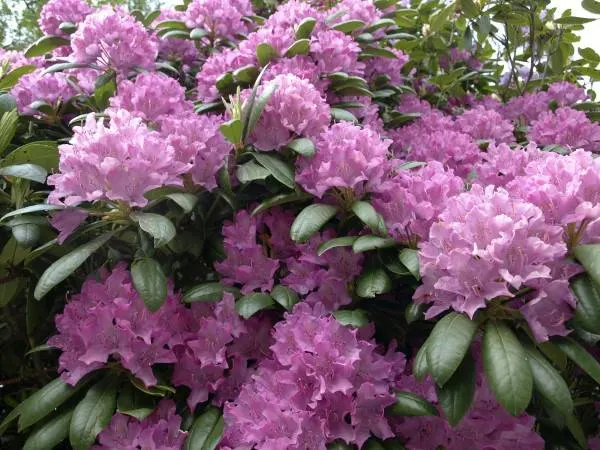
With that aside, let’s jump straight into the similarities and differences between the two species.
Hydrangea vs Rhododendrons – Differences
The overall appearance is the main difference between Hydrangea and Rhododendrons, except for their history and origin (already mentioned).
Appearance
Height of Hydrangea
These little beauties can reach up to 15 feet in height. They are fast growers and can fill your landscape in one-tenth of a decade.
If your Hydrangeas are fully matured and still not growing big, try pruning them. If you want a giant ball of blooms on your plant, give them an excellent cut in early spring.
Generally, the shrubs are elevated up to 1 to 3 meters. On the other hand, there are trees.
Few are relatively small, while some reach up to 100 feet in height!
Height of Rhododendrons
On the minute end, the tiny Rhododendrons are just a few inches.
And on the other end, the Hydrangea vs Rhododendron picks up the pace when a giant tree Rhododendron grew to a marvelous 30 meters of height.
AND this one, in fact, wins up the whole game here by growing into a 40ft broad scenery.
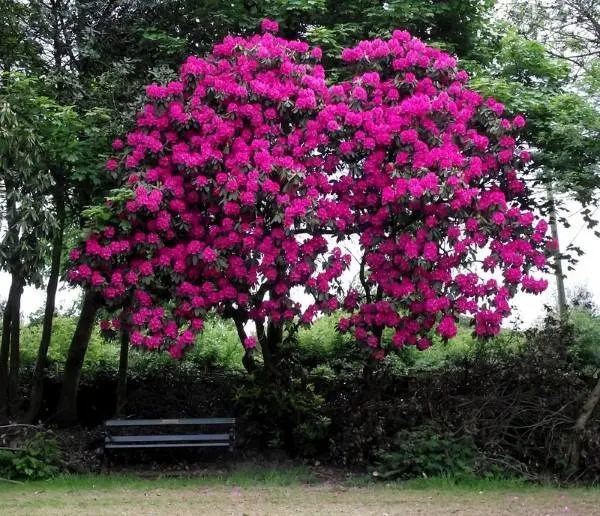
Hydrangea Flowers
Blooming in early spring or at the end of autumn, the Hydrangeas give your gardens a rich vibe. The flowers on these species often grow in the form of colossal round globes (flowerheads). They appear furry and fluffy and usually grow at the tips of the stems, forming a gigantic cluster of petals.
Wild species lack the beautiful showy flowering, while most cultivated varieties display a wide range of colors (see below).
Rhododendron Flowers
Flowers in Rhododendrons have trusses most of the time. They are anciently known as “Natural-medicine.”
The flowers of Rhododendrons were used for treating many ailments like inflammation, headache, and bacterial and fungal infections, including diarrhea.
Due to their phytochemical, potential they are also used in making modern medicines.
Colors in Hydrangea
Hydrangeas are showstoppers because of their great diversity in vibrant and beautiful colors. Most of the species are just cloudy white yet look astonishing.
However, the flowers go wild to show their gorgeous hues in others, notably (H. macrophylla). They can go from one spectrum of light at violet, purple, or blue to the other side looking orange or red.
These colors primarily depend upon the contents and pH of the soil. Relatedly, the pioneer here is aluminum ions. The floral color changes with the presence or absence of aluminum ions.
The greater the number of aluminum ions present in the soil, the more bluish the flowers appear. The availability of these ions depends upon the pH of the soil.
Another rule of thumb for coloring is that: The greater the pH of the soil, the less aluminum is available to the plants.
Therefore, the plants in acidic soil (lower in pH) produce violet or blue blooms, and the plants rooted in an alkaline soil mixture (higher in pH) will show red or pinkish color.
You can also change these colors by changing the pH of the soil (mainly in H. macrophylla). Usually, the pH increases by adding agricultural lime or perlite and decreases by adding peat moss or sulfur.
But please keep in mind not to increase the pH levels beyond 7.5. That can cause damage to the plant.
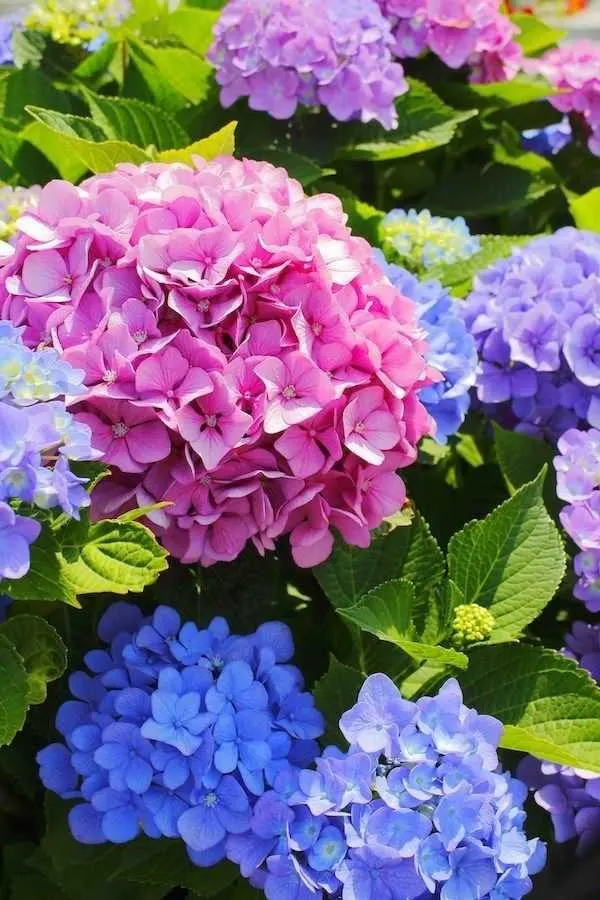
Colors in Rhododendron
On the contrary, Rhododendrons are famed for their big, gristly greeneries and the variations in the shades of colors they feature.
Some species have big spherical shrubs of white, pink, and carmine red blossoms. The name means “Rose-tree.” But they are far more dynamic and diverse than roses.
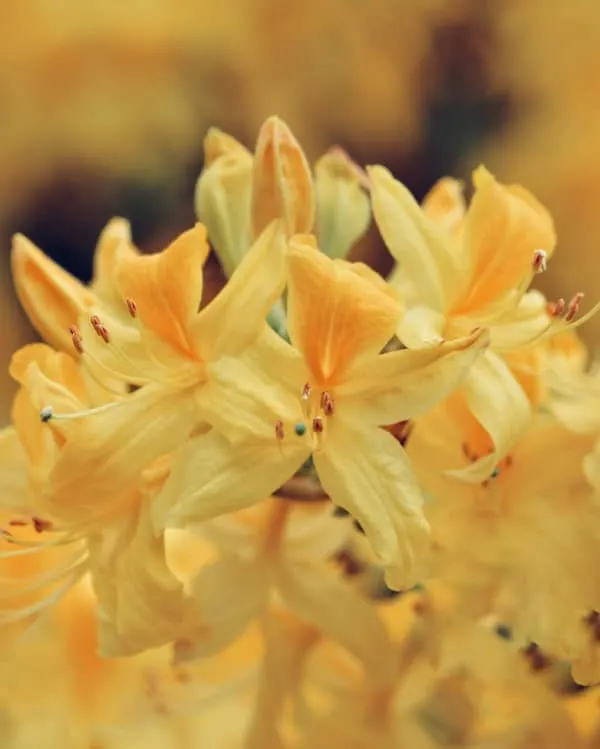
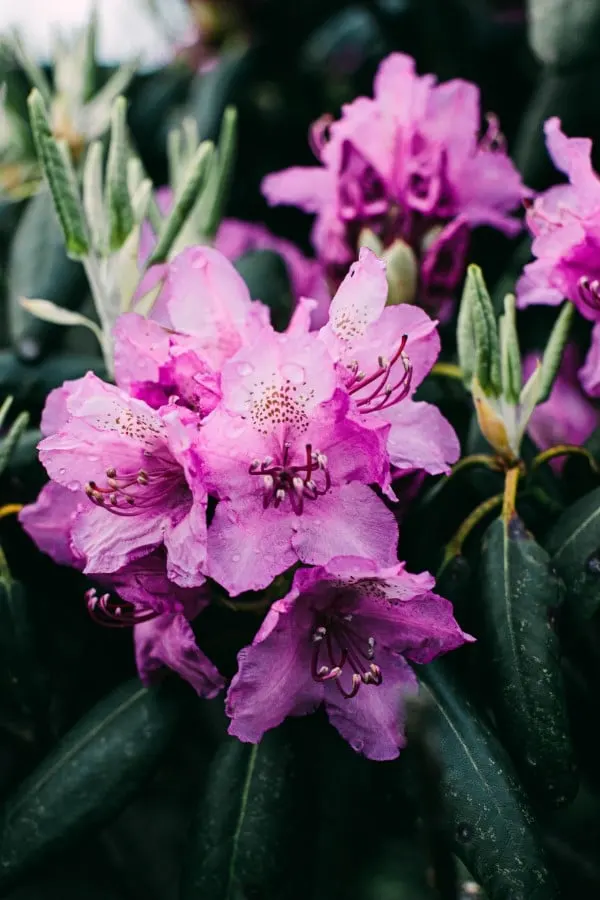
They, like Hydrangeas, also show a spectacular selection of colors. Some species also display wavelengths in a shorter range of the light spectrum. While some also show tinges like cream-yellow or “#FBCEB1.” 😉
In some species, the flowers are characterized as having long strings (up to 12 inches). Others have individual bells hanging down from the stalk.
Hydrangea vs Rhododendron – Similarities
With the different appearances and history set aside, let us now look at some of the similarities.
Both of the genera are pretty similar in terms of using and propagating.
1. Uses of Hydrangeas
Hydrangeas are most widely used as ornamental plants. They are pretty easy to care for and can tolerate medium to bright sunlight. Thus, it can be used as embellishments for your windows.
You can also use some species of Hydrangeas shrubs (primarily H. macrophylla) to increase the richness of the walkways to your home. It gives a glamorous vibe to your whole outdoor landscape.
Their attractive blooms are also often presented as gorgeous bouquets to friends and family.
2. Uses of Rhododendrons
Most Species related to Rhododendrons are pretty tolerant and are often added to the outdoor canvas. That can also result in the eyeballs stuck at your house. Therefore, it is always best to keep them away from evil eyes.
In gardens, small Rhododendrons can be paired up with pines or oaks. As I mentioned their use in the medical field, some species are also used as specimen plants.
A few varieties can also climb and vine and can be trained to climb up walls, trellises, or fences. Therefore, increasing giving your gardens the glory they deserve!
Both Hydrangeas and Rhododendrons are grown in nurseries for commercial purposes.
Since these florae can effortlessly steal the show, you should have a bunch of them ready for the work. The best way to do that is through propagation.
Propagating Hydrangeas and Rhododendrons
It would be best if you propagate your plants just before the growing season, or to say, during fall or early spring.
In this way, the plants form healthy roots by their time to flower.
The easiest way to propagate Hydrangeas and Rhododendrons is through stem cutting.
The main steps are the same for both of these plants:
- First, we need to find a good, clean, non-flowering stem to cut off from the plant.
- Once you find a healthy and sturdy stem with a few leaves (2 to 3 sets), cut it off from the plant just above the leaf set to promote new growth.
- After getting a clean-cut, remove the lower sets of leaves. For Hydrangeas, you can pretty much remove all the lower leaves if you have a small cutting, but for Rhododendrons, you should make a balanced structure for the stem to grow.
- Finally, pot them into your ideal potting mix. It is always better to use some perlite in your regular mix. It helps to increase the drainage and, at the same time, can also retain water.
- Keep the soil moist for a few weeks until you see some growth.
For Hydrangeas, you can check out this easy tutorial on YouTube.
For Rhododendrons, you can check out this one.
Conclusion
If you are one of those who wish to enhance the exquisiteness of their landscape, Hydrangeas and Rhododendrons are the best competitors out there.
They are magnificent in terms of looks, potency, and versatility.
On that note, I conclude this talk with you.
I hope you liked this Hydrangea vs Rhododendron rattle.
Don’t forget to share your thoughts on these beauties. Also, make sure to share this valuable information with your friends and family.
Regards, Mahad H.
